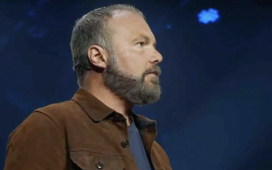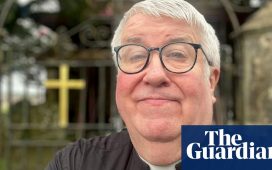Rochelle Shorrick’s freezer would normally be filled well in advance with meals for extended family and friends over the Jewish high holy days of Rosh Hashanah, the Jewish new year, and Yom Kippur, the day of atonement.
Usually she bakes a honey cake to signify a sweet new year, and pops some extra dishes in the freezer in case of last-minute guests. She looks forward to several visits to her local synagogue in Borehamwood, Hertfordshire, with her husband and three children – especially the service which precedes 25 hours of fasting and prayer on Yom Kippur, the holiest day in the Jewish calendar.
This year, particularly after the government last week banned all gatherings of more than six people, it’s different. “My parents aren’t coming, we won’t be able to go to shul [synagogue] very much, and I haven’t started cooking,” said Shorrick, a nursery manager. “It’s a lot to do with the uncertainty of everything, and the intensity of the past few months. I have a slight feeling of disconnect.”
The holy days of Rosh Hashanah and Yom Kippur, which span a 10-day repentance period starting on 18 September, are the most significant points of the Jewish year. “If you only go to the synagogue a couple of times a year, this is when you go,” said Jonathan Mindell, chair of Pinner United Synagogue. Before the pandemic, about 200 people attended regular services on Shabbat, the Jewish sabbath. “At Rosh Hashanah and Yom Kippur, we usually get between 600 and 650.”
At the Golders Green United Synagogue, a grade II-listed building in north-west London built in the 1920s, up to 850 people usually fill its galleried, oak-panelled hall for high holy day services. This year, both synagogues are expecting about a quarter of previous years’ numbers.
Synagogues, like other places of worship, were allowed to reopen for services in early July, but must follow guidelines to make the environment safe. Now, most require people to book, both to limit numbers and to record contact details. Face coverings must be worn, social distancing is enforced, congregational singing is banned and communal resources, such as religious texts, have been removed.
At Golders Green, the synagogue leadership made the painful decision to exclude children under the age of nine. “Children are the lifeblood of our community, but you can’t expect them to socially distance,” said chair Naomi Verber.
Recently, special children’s services have restarted outdoors, and during the high holy days adult services will also be held outside, in a playground that backs on to the synagogue. “We’ve taken the pulse of our community and people feel more comfortable outdoors. So our fingers are crossed for no rain,” said Verber.
“There’s no doubt we lose something outside. There is a real emotional attachment to our beautiful building, but at the end of the day the spirit of our community is in its people and our beliefs.”
Many synagogues are shortening services, both to make them more tolerable while wearing a face mask and to be able to increase the number on offer. “On Yom Kippur, instead of half a dozen services, we may have 13 this year,” said Mindell. “Our goal is to allow as many people as want to experience a synagogue service to be able to do so. We don’t want anyone turned away.”
The prohibition on Orthodox Jews using phones and electronic devices on Rosh Hashanah and Yom Kippur, plus the sabbath, means that services cannot be streamed. But the United Synagogue, an umbrella organisation of more than 60 Orthodox communities, will stream Kol Nidre, the evocative service which begins Yom Kippur, and the Yizkor prayer, a special memorial for the dead led by the Chief Rabbi, before sundown on 27 September, when fasting begins.

Jews are being forced by the pandemic to adapt another key ritual, blowing the shofar, a hollowed-out ram’s horn, which must be heard in person. However, some communities are planning outdoor shofar blowing in public parks on Rosh Hashanah and at the end of Yom Kippur.
Mindell said: “We’ve had to innovate in response to the challenges of Covid. Synagogue chairmen have been trading ideas on a WhatsApp group. It’s been the same for all religions in the past six months. But we’re good at adapting – that’s why we’ve lasted so long.”
Jo Grose, communities director of United Synagogue, said: “Following the government’s new ‘rule of six’, it’s clear that many Jewish families won’t be able to enjoy a large festival meal together as they would do in usual years. This will be immensely disappointing but our community recognises the urgent public health need to do what we can to bring the disease under control.”




